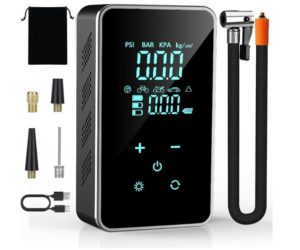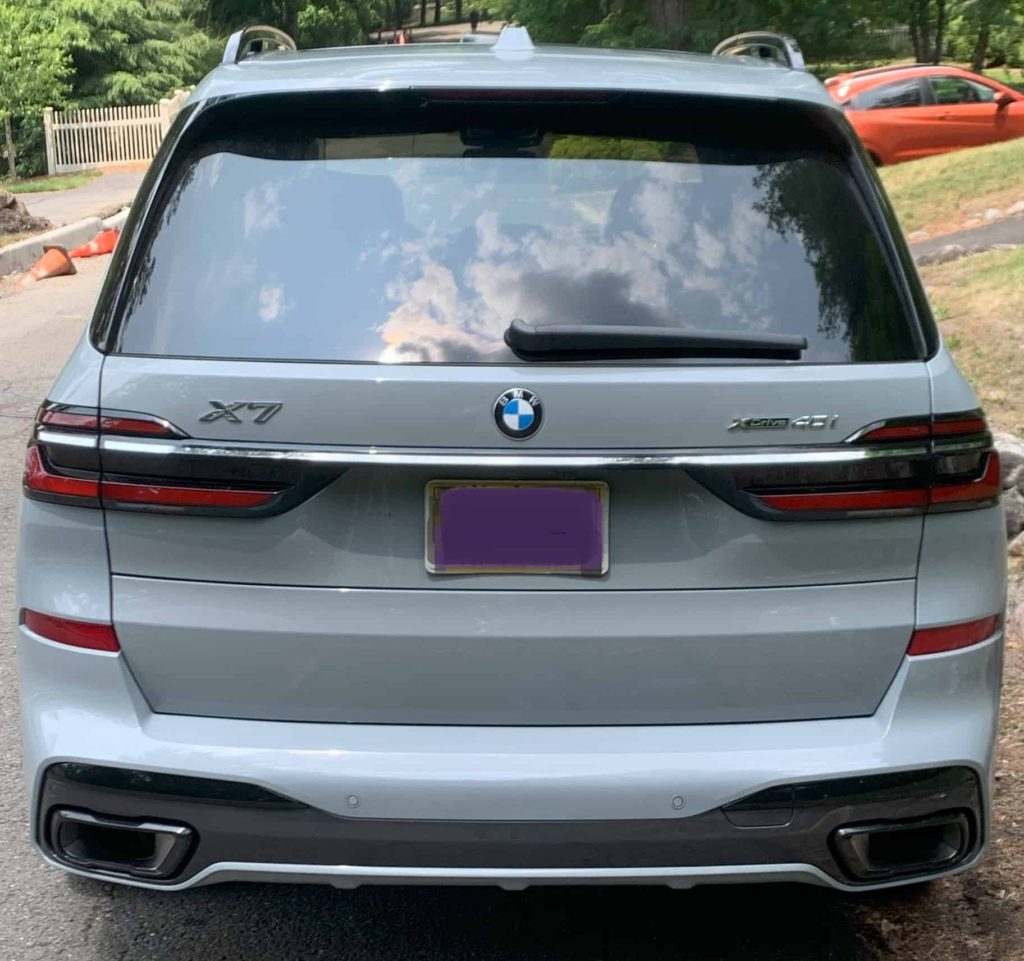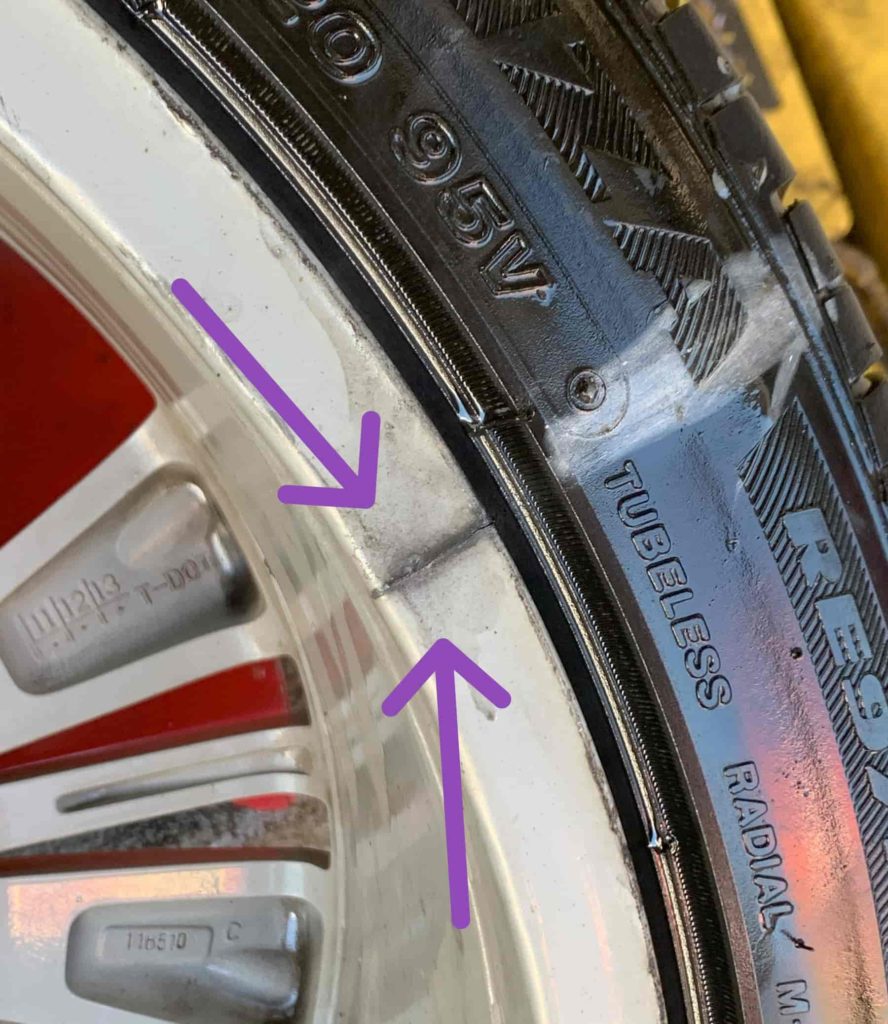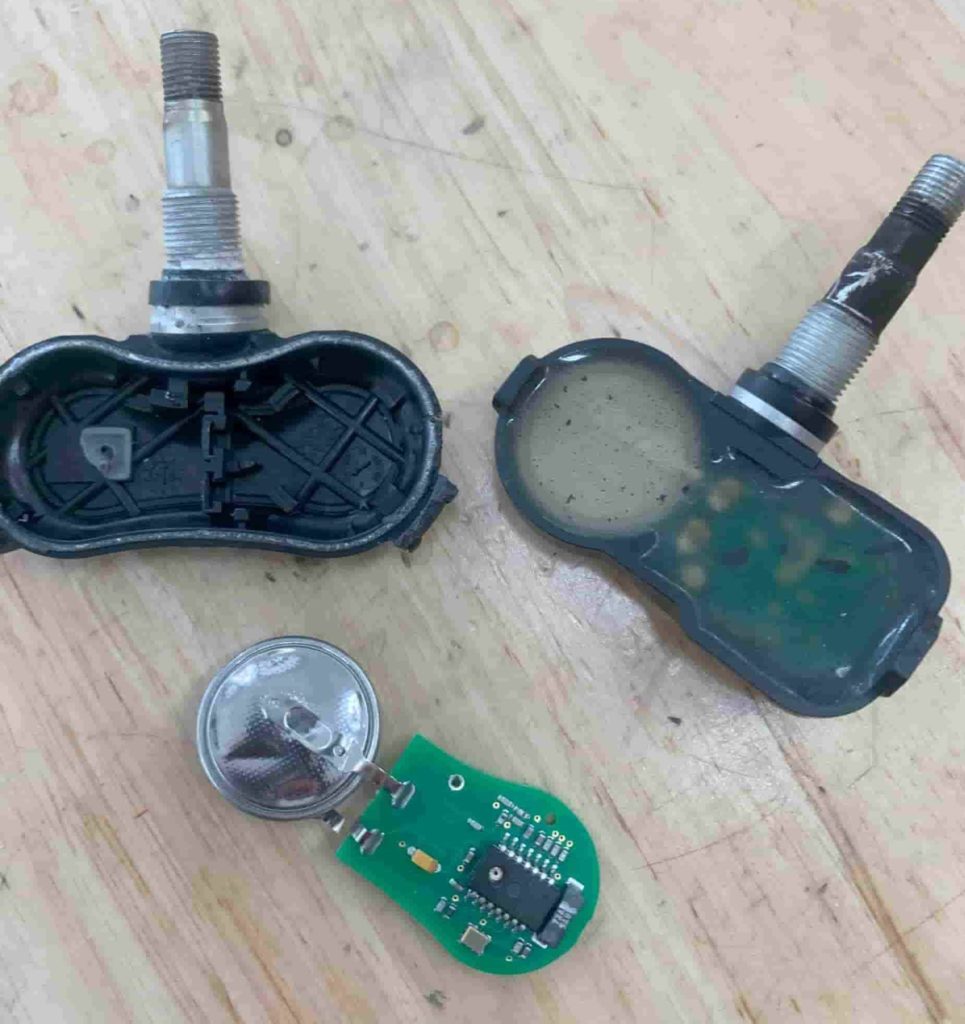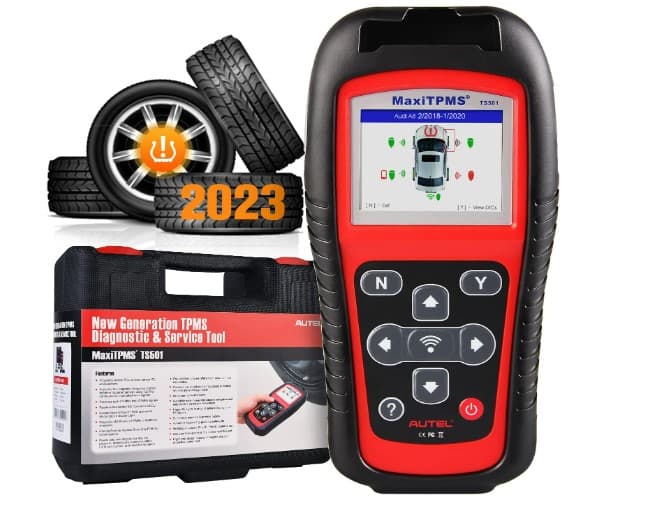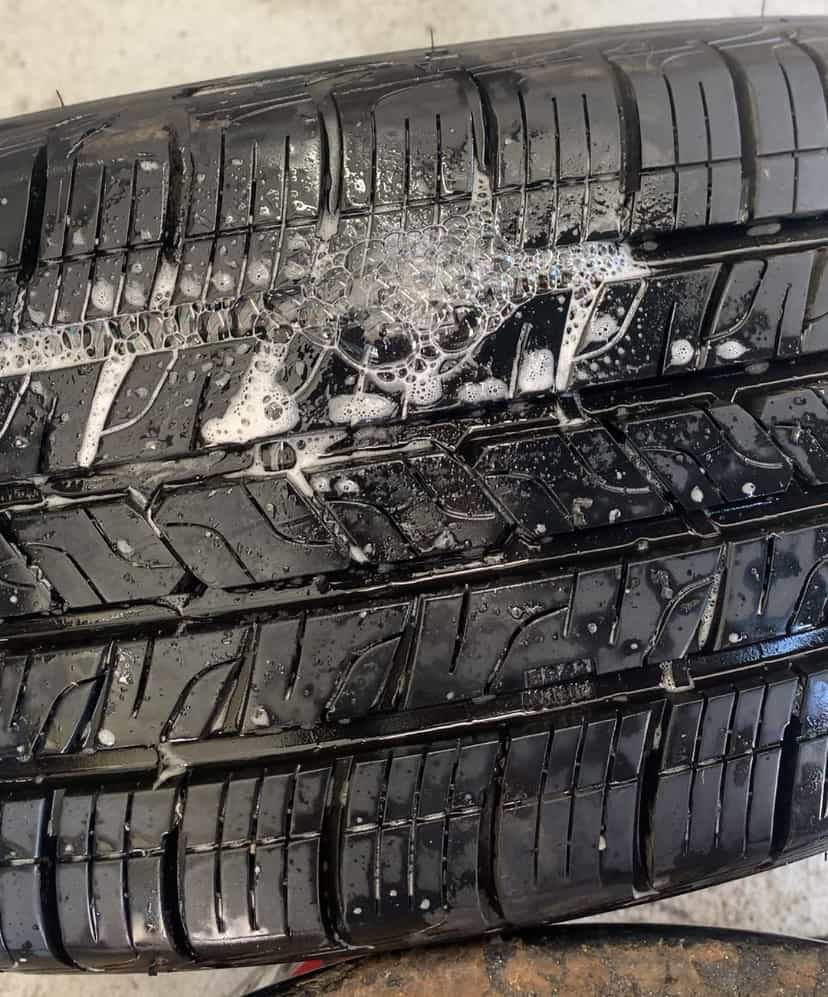What is the BMW X7 TPMS?
The BMW X7 tire pressure monitoring system (TPMS) is a sophisticated feature designed to maintain optimal vehicle safety and performance by constantly monitoring the air pressure in all four tires. It alerts the driver via the vehicle’s display monitor if the pressure falls below or rises above the recommended levels, thus assisting in preventing tire-related mishaps.
Steps to Reset 2018-2024 BMW X7 Tire Pressure Light
Select CAR on the Idrive infotainment screen
Select VEHICLE STATUS
Select TIRE PRESSURE MONITOR
Select TIRE SETTINGS
Choose the correct TIRE TYPE (choose summer or winter if you swap tires for different seasons)
Select SAVE TIRE SETTINGS
If you are swapping between winter and summer tires, follow the same steps but select PERFORM RESET after selecting the season.
How Does the BMW X7 Tire Pressure System Work?
The BMW X7’s TPMS uses sensors mounted inside each wheel that constantly measure the air pressure of each tire.
The sensors send data wirelessly to the car’s onboard computer, which calculates the pressure of each tire and compares it to the recommended level.
If the pressure in any tire falls below a certain threshold (usually 10%-25% below the recommended level), the TPMS will illuminate a warning light on the dashboard.
Then the BMW X7’s TPMS will display a message on the dashboard indicating which tires are underinflated.
The TPMS can then be manually reset by the driver once the tire pressure has been adjusted. (follow steps above)
The TPMS also measures the temperature of each tire for more accurate readings and to help improve performance.
By constantly monitoring tire pressure and alerting the driver to any issues, the BMW X7’s tire pressure monitoring system ensures that the car is always operating at peak performance, improving safety and the overall driving experience.
When Should You Reset BMW X7 TPMS?
After adjusting tire pressure.
After tire rotations, balances, or wheel alignments.
After replacing one or more tires.
After installing new wheels. (remember to transfer old sensors to new wheels)
If the tire warning light doesn’t go out on its own.
After switching between seasonal tires. (summer to winter)
After replacing, charging, or jumping the X7’s 12 Volt battery.
After repairing or replacing any faulty TPMS sensors or valve stems.
Understanding Tire Pressure
Does the Weather Affect the Tire Pressure?
In the BMW X7, weather can significantly affect tire pressure due to the physical properties of air. Cold temperatures cause air to contract which leads to reduced tire pressure, while warm temperatures make air expand which increases pressure. When the temperature drops significantly you may see a warning indicating low pressure. This is normal. Keep in mind that for every 10 degree fahrenheit change in air temperature, your tires will adjust by about 1 Psi in the same direction.
How to Check and Adjust Tire Pressure
We recommend using a manual tire pressure gauge to check the pressures of each of the tires but you can also check the pressures this way:
Start the BMW X7 and allow the system to initialize.
Select the “Menu” button above the Idrive joystick.
Select “Car”
Scroll down to “Vehicle Status” using the iDrive controller and select it.
In the new menu, select “Tire Pressure Monitor” or “TPM.”
On the new screen, you should see the current pressure reading for each of the four tires. The system displays the pressure in psi (pounds per square inch). Make a note of these values.
Compare these readings to the recommended tire pressure levels found in your vehicle’s manual or on the sticker usually located on the driver’s side door jamb. The chart below has the 2022 BMW X7 wheel sizes and tire pressures for reference.
If the pressure in any of the tires is significantly higher or lower than the recommended pressure, adjust it accordingly using an air compressor.
After adjusting the pressure, drive the SUV for a few minutes to allow the TPM system to update.
Check the TPM display again to ensure that all tire pressures are now within the recommended range. Repeat steps 7-9 if necessary until all tire pressures are correct.
Don’t forget to put the valve caps back on the valve stems to prevent dirt and moisture from seeping in!
Depending on the Version X7 you have you can actually ask the vehicle using voice commands if the tire pressure is ok. For example:
1. “Car”
2. “Is my tire pressure still OK?”
2023 BMW X7 Wheel Size and Tire Pressures
TIRE SIZE | FRONT PSI | REAR PSI |
275/50R20 | 32 | 38 |
255/55R20 | 35 | 42 |
275/40R22 | 35 | |
315/35R22 | 42 | |
285/45R21 | 32 | 38 |
SPARE | 60 | 60 |
Impacts of Driving with Underinflated or Overinflated Tires
Driving the BMW X7 with underinflated or overinflated tires can lead to several consequences, including:
Decreased Fuel Efficiency: Improper tire inflation can increase rolling resistance, causing the SUV to use more fuel to maintain the same speed.
Reduced Tread Life: Both underinflation and overinflation can cause uneven tire tread wear which reduces the lifespan of your tires. Underinflation often results in excessive wear on the outer edges, while overinflation leads to accelerated wear in the center.
Poor Handling: Tires inflated to incorrect pressures may not respond as effectively to steering, braking, or acceleration, potentially compromising vehicle control.
Increased Risk of Tire Damage: Underinflated tires are more prone to damage such as tire blowouts because they can’t absorb road impacts as well. Overinflated tires are more susceptible to damage from road debris or potholes.
Decreased Comfort: Both underinflated and overinflated tires can result in a less comfortable ride due to increased vibration and bumpiness. Overinflated tires flex less so they absorb less of the road imperfections resulting in a stiff and bumpy ride!
Heightened Accident Risk: Overall, driving with incorrectly inflated tires can increase the risk of accidents due to poor handling, increased stopping distances, and unexpected tire failure.
Negative Environmental Impact: With reduced fuel efficiency and shorter tire lifespan, driving with incorrectly inflated tires can also have a greater environmental impact.
What Can Cause the BMW X7 Tire Light to Come On?
Temperature and Altitude changes: Extreme temperature changes as well as elevation changes can cause tire pressures to change.
Radio frequency interference from other electronics
Worn-out tires: Tires that have reached the end of their life span may develop leaks or lose air more easily. Tires that sit for long periods of time will also develop dry-rot that can lead to naturally occurring pressure loss.
A flat tire or slow leak due to puncture or damage to the tire.
A crack in one or more rims/wheels. (This is VERY common in BMW vehicles)
Vehicle weight overload, too much weight in/on or being towed by the BMW X7.
Faulty tire pressure sensors: leaking or damaged TPMS sensors. Faulty TPMS sensors can potentially send incorrect readings to the car’s computer.
Driving with the X7 spare tire on will always cause a low tire pressure light because the spare tire does not have a tire pressure sensor inside.
TPMS software or calibration issues. Occasionally software needs to be updated.
Dying TPMS sensor battery.
A dead vehicle battery that is jumped or replaced can cause the TPMS light to come on.
Is It Safe to Drive the BMW X7 With the Tire Light On?
Understanding why the tire warning light on your BMW X7 is illuminated is crucial in assessing the safety of continuing your journey. Is there a puncture causing the tire to deflate? If so, is the air loss rapid or gradual? Could the issue lie not with the tires themselves but with malfunctioning pressure sensors? Although there might be instances where driving with the warning light on isn’t immediately dangerous, it typically signals a significant safety concern. Getting answers to these questions will give you insight into the actual issue and will guide you to make a safe and informed decision about whether or not it’s safe to drive your X7 with the tire light activated.
BMW X7 TPMS Malfunction Indicator
The BMW X7 also has a way of letting you know that the tire pressure system itself isn’t working properly. It’s called the TPMS malfunction indicator. When the tire light on the dashboard is flashing, this indicates the tire pressure system is malfunctioning. The yellow exclamation point will flash for about a minute and then the light will turn solid everytime you start the SUV until the issue is resolved.
BMW X7 Tire Pressure Sensor Batteries
Each tire pressure sensor in the BMW X7 functions autonomously and is powered by a built-in battery similar to those found in key fobs or wristwatches. Enclosed in a plastic casing and directly connected to the sensor’s circuit board, these batteries are non-replaceable. This implies that a full sensor replacement is necessary once the battery is drained or nearing its end. Several factors can influence the battery’s lifespan, including driving conditions, weather variations, and the regularity and length of your trips. Generally, tire pressure sensor batteries can last anywhere from 5-10+ years.
Troubleshooting the BMW X7 Tire Pressure Light
If your having issues getting your BMW X7 tire pressure light to turn off or reset, here are a few things you can try:
Option 1: Is the Tire Losing air?
Loss of air pressure is the most common reason for the tire light to come on. If you add air to the tire with low pressure, the tire light turns off or resets, and then the tire light comes back on within minutes, hours or days, this implies you have a leak within the tire or wheel.
Option 2: Activate a Non-Responsive Sensor
If the tire light is illuminated and you’re certain your tires aren’t deflating, it might be that the sensor requires a simple reset. Begin by identifying the tire that’s triggering the light, then deflate the corresponding tire by around 15 to 20 Psi before re-inflating it to approximately 10 Psi over the recommended pressure (for example, if the tire is supposed to be at 32 Psi, set the pressure to 42 Psi.) Now that the tire is overinflated, go for a short drive. Avoid busy roads and highways driving at low speeds only for a few miles. Afterwards, park the SUV and adjust the tire pressure back to the recommended levels. Reset/calibrate the TPMS using the infotainment system and then drive the vehicle again.
Option 3: Erase the BMW X7 Diagnostic Trouble Codes
If all else fails and your tires aren’t deflating, you can erase the error codes from your BMW X7’s Electronic Control Unit (ECU) manually. This process involves disconnecting the negative terminal of your vehicle’s 12-volt battery. Let it stay detached for a few minutes before reattaching the terminal. This step essentially erases all the existing fault codes in the ECU including the one causing the tire pressure warning light to illuminate. If the tire light goes off but then lights up again after this procedure it’s likely that there’s a faulty sensor or a genuine tire leak.
Option 4: Check the Battery Status of Each Tire Sensor
If you believe one of your tire pressure sensors has a low battery and is causing your tire pressure light to turn on, you can check the status of each sensor using a TPMS diagnostic tool. Regardless of which TPMS diagnostic tool you have they are all generally the same and this procedure will remain the same. To test each sensor, place the TPMS tool directly in front of the valve stem and select the “test” function on the tool. After you have done this to all 4 pressure sensors the TPMS tool will produce a report that includes each sensor’s current battery status. If the status of any sensor is “low” this means that sensor needs to be replaced.
Option 5: Does the Tire Light Come on and Then Turn Off?
If the tire pressure light is on when you start your BMW X7 but extinguishes as you drive, it indicates that your tire pressure is marginally below the required level. This can occur when your tires start off cold in the morning (perhaps at 33 Psi) and warm up as you drive. Tire pressure increases as the tires heat up (possibly up to 38 Psi) which in turn deactivates the warning light. To address this ensure that each tire is precisely inflated to correct pressure.
Tire Leaks and Solutions
How to Find the Source of a Leaking Tire
To identify a tire leak in your bmw x7, begin by assessing the air pressure in all four tires to determine which one is deflated. Inflate this tire to at least 35-40 Psi because pinpointing a leak in a totally flat tire can be challenging. Next, fill a spray bottle with a mixture of water and soap (window cleaner like Windex also works). Liberally spray this solution over the tire making sure to cover the valve stem and bead seal. After the tire is soaked, watch out for small bubbles appearing on the tire’s surface. If there’s a leak, the escaping air will form tiny bubbles at the leak point. Bear in mind: if the tire is losing air, there’s a leak somewhere and you’ll eventually find it!
Are Tire Plugs Safe?
Yes, I have personally plugged hundreds of tires with tire plugs and they are extremely reliable. Tire plugs are extremely robust and when installed correctly will last for the entire lifespace of the tire. Only use tire plugs on the tread of the tire.
Can I Disable the BMW Tire Pressure Monitoring System?
The short answer is no. If you remove the tire pressure sensors from all the wheels the tire pressure light will malfunction causing it to flash and then stay on permanently.
Everything in this article is applicable to all BMW X7 models and trims including the BMW X7 xDrive40i, xDrive 50i, X7 /m60i and Alpina XB7
Please note that this blog post contains Amazon affiliate links. This means that if you make a purchase through one of these links, we at TPMSRESET.COM may earn a small commission at no extra cost to you. We only recommend products that we personally use and believe in. Thank you for supporting us.



